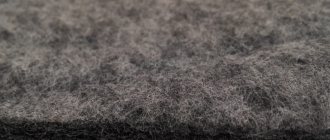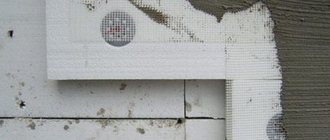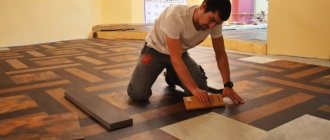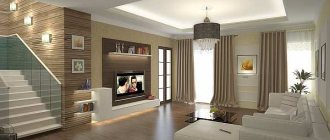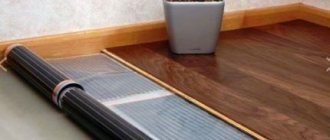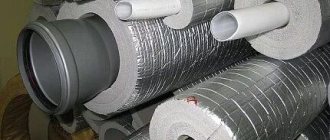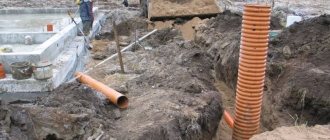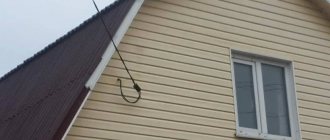Modern apartments have a low level of sound insulation. This is mainly due to the fact that sound insulation is not used during construction, and as a result, while sitting in your apartment, you can hear what your neighbors are talking about. Constant noise can not only ruin your mood, but even cause harm to your health. A nervous breakdown is one of the problems that you may encounter. The problem can be solved if you make high-quality and complete sound insulation of the apartment.
@Sumanet
How you want to come home after a working day and relax. It would seem that it is complicated, but in modern apartment buildings it is very difficult to achieve silence. Despite the abundance of soundproofing building materials, not all developers take soundproofing of apartments seriously, so you have to do everything yourself.
The most effective way of soundproofing is an integrated approach. As a rule, comprehensive sound insulation is done during renovation. Unfortunately, not everyone can drop everything and start repairing, because such activities take a lot of time and effort. There are options that allow you to protect your apartment from extraneous sounds, even without repairs, and this is what will be discussed in the presented material. Sound insulation after repairs has been made is possible, but its effectiveness will differ from that installed initially.
What noise can disturb
As you know, there are two types of noise: airborne and vibration. As for the first option, judging by the name you can understand that it is transmitted through the air. Such noises include: neighbors talking behind the wall, a working TV, loud music playing, etc. There is also vibration noise that can be transmitted over hard surfaces. Often such vibrations are created by power tools or household appliances. It is possible to protect an apartment from such noise even without renovation. Effective noise protection can be done using:
- rearrangement of furniture;
- use of textiles;
- replacing doors;
- gluing sound-absorbing wallpaper.
By following all the recommendations, you can achieve the expected result, but only in a comprehensive solution. If you protect one wall and everything else remains the same, then such work will not bring results, but with a comprehensive solution to the problem, everything will definitely work out.
How to reduce discomfort from an elevator operating behind a wall
vlad11111FORUMHOUSE Member
Please help. I bought an apartment: a brick house, built in 2004, with a single entrance (thick walls) ceilings - reinforced concrete slabs. The house has 9 floors, there is a technical floor, an apartment on the 5th floor. The joy of shopping is overshadowed by the noise of the elevator, it is right behind the wall of the corridor. It’s not that it’s completely impossible to live, but it’s really annoying because you’re not used to it. There are even more sounds of the elevator turning on and braking, such loud “blows”. Now, if you do (and what kind of) noise insulation of the wall from the elevator along the entire length and the ceiling in the entire corridor - will this change the situation? Or are these noises transmitted along the walls and dancing with soundproofing is useless? Neighbors on the other side of the building say they can't hear the elevator. I am ready for financial expenses and reducing the width and height of the corridor.
Acoustic Group specialist recommends the following.
Noise from elevator equipment is transmitted structurally through the building structure. For this reason, there is little point in soundproofing individual structures (in particular the wall in the corridor).
Try to discuss with the management company the possibility of implementing vibration isolation measures and adjusting elevator equipment to eliminate noise transmission at the source.
If this is not possible, you will have to do comprehensive sound insulation of either the entire apartment or a separately selected room (ceiling and walls). The ZIPS III Ultra system is suitable for this.
And frame cladding of the ceiling and walls, consisting of materials:
- Shumanet-SK Neo slabs;
- Suspensions Vibroflex-Connect PP;
- Sheet covering - double gypsum fiber board, gypsum board, thickness from 12.5 mm, for soundproofing ceiling cladding.
Plus:
- Sound-absorbing boards Shumanet-SK Neo;
- Sheet cladding with double gypsum plasterboard, gypsum fiber board, thickness from 12.5 mm; for frame wall cladding.
Furniture absorbs sound
Coziness and comfort in the house depends primarily on pieces of furniture. If you install a bookcase on the entire wall in a room, the noise level will decrease significantly, since the furniture is able to absorb various sounds. When soundproofing is done in an apartment, the main task of the measure is to increase the thickness of walls and partitions for effective protection.
@Sumanet
Furniture installed along the wall is able to hold sounds without letting them pass further. Of course, in terms of efficiency, this option is less productive than special sound insulation, but, nevertheless, you will not hear so much what the neighbors are doing or who is going up the stairs.
A good option for a room could be a large closet or wardrobe. In most cases, such furniture is intended for clothing, so given the thickness of the furniture walls and hanging items, we can say that the noise level will decrease significantly. Previously, people often installed bookshelves and shelving all over the wall; this option is also effective, since, despite the open type of construction, it accommodates books of varying thicknesses, and this in turn helps absorb noise.
Conclusion
An integrated approach, specialized materials and correct installation are the key to long-awaited peace of mind. It is almost impossible to completely eliminate extraneous noise, but the proposed solutions will help reduce their level to a comfortable minimum.
On the topic, it is useful to read material about local sound insulation of the ceiling. Decorative noise-absorbing panels will help to muffle irritating sounds somewhat. The video is about a house using LSTK technology, in which everything is in order with sound insulation.
Subscribe to our Telegram channelExclusive posts every week
Textiles absorb sounds
As you know, soft surfaces can absorb sounds, and the more textiles there are in the apartment, the more effective the sound insulation without repair. For soundproofing without repairs, you can first lay a carpet or rug on the floor. If we consider coatings in terms of efficiency, carpet will absorb sound much better, but from an aesthetic point of view it is worth giving preference to carpet.
@Sumanet
As an option, you can even hang carpets on the walls as our grandparents did. Soundproofing will be good, but modern decor doesn't have room for a hanging rug. You can hang a carpet on the wall, if it is somehow unique or designer, then you can try to fit it into the interior design. Recently, various tapestries on the walls and blackout curtains are increasingly being used to decorate apartments. Basically, this decor option is suitable for the classic style, and if the existing environment contains some products of this style, then you can try it.
Thick curtains can be hung not only for windows, but also on walls; such an addition will look good. The bedroom and living room will look especially relevant. If we are already talking about the bedroom, then in this room you can improve the soundproofing characteristics by using a soft finishing option. Modern finishing materials allow you to make your home more neat and secure even without renovation. Recently, the use of large beds with huge headboards has been in fashion. In addition to aesthetic beauty, such beds also help reduce noise. It does not matter whether the headboard is made of solid wood or using other materials. This bed will fit perfectly into the bedroom interior and can improve soundproofing qualities.
@Sumanet
Constant development of finishing materials today offers customers a large selection of overlay panels made on a fabric basis. The main advantage of such surfaces is that you do not need to make a full repair to install them. You can do everything yourself using a minimal set of tools. Overlays can use a fabric or paper backing. In the second option, these can be full-length apartments, portraits and landscapes. Often people use all kinds of decorations hanging on the walls to highlight their interior. Of course, from a design point of view, such additions are not always relevant, but in cases of noise insulation, it’s really nothing.
Main parameters of the ventilation duct
The main criterion by which a ventilation duct is selected is its throughput. A person without special education will not be able to calculate its capacity, since the formula is complex, but there are a lot of tables that reflect the required throughput, depending on the size of the box.
The main pattern is simple: the throughput capacity depends on the existing angles and irregularities in the box design - the more there are, the more difficult it is for the air to function correctly. To remove the same volume of air in this case, more powerful equipment or a larger cross-section is required.
The surface of the ventilation duct - both external and internal, can be smooth or corrugated. Boxes can also be round, square or rectangular in shape, but round designs are preferable, since they have no obstacles to air exhaust and are easy to clean. The boxes differ in the material they are made of: plastic or metal.
Doors can reduce noise
Not only walls, but also doors and windows need to be protected from sounds. With the advent of metal-plastic windows, the problem of sound insulation of this element has moved aside, since double-glazed windows effectively and reliably retain noise. The door is another matter. If you need effective sound insulation without repairs, then as an option you need to install heavy doors made of natural solid wood. The cost of such a product is quite high, but the effectiveness is noticeable. You will be able to feel the difference immediately after replacing the door.
If it is not possible to install new wooden doors, then it is worth choosing designs that use sound-absorbing materials. As an addition, entrance doors can be covered with leatherette, which will significantly reduce noise and sound levels.
What do you use to line the walls in a recording studio?
Recording studio materials
- Walls Rokfon Ecofon Isofon
- Ceilings Armstrong Clineo Selenite
- Universal Mineral wool Foam rubber
Interesting materials:
How to dry a down jacket after washing in a washing machine? How to dry woolen items after washing? How to dry knitted items after washing? How to remove ink from fabric without washing? How to remove pills when washing? How to remove yellowness from white sneakers after washing? How to remove yellow stains on sneakers after washing? How to remove yellow stains from white sneakers after washing? How to remove yellow stains on white sneakers after washing? How to shrink a jacket when washing?
Ceiling soundproofing
For high-quality sound insulation, it is necessary that the entire room is protected, and not just the walls and floor. The ceiling also needs to be soundproofed and this can be done in two ways. The first is to make suspended ceilings on a fabric basis. There are special sound-absorbing materials that absorb sound waves coming from the upper floor. As an option, you can also try to negotiate with your upstairs neighbors to have them soundproof the floors in their apartment. It is unlikely that anyone will agree to such alterations, however, as an alternative solution, you can ask to lay a carpet or paths. By offering to pay for the arrangement, something might come of it at your own expense.
Self-installation rules
Do-it-yourself sound insulation
When installing sound insulation yourself, you should not skimp on high-quality and easy-to-use materials. Experts recommend that beginners use polyurethane foam boards. They are elastic and easy to install on uneven surfaces.
The sound insulator should be secured securely. Wire is suitable for this and can be wrapped on top with plastic film and tape.
Bottlenecks and transitions should be treated with polyurethane foam.
Wallpaper can help
If you need to reduce the noise level in your apartment, but there is no need to completely renovate it, you can use sound-absorbing wallpaper as an alternative. As wallpaper materials, you can use cork, bamboo or wood made from wood chips. Such cosmetic repairs will take a little time and money, but the result will be effective. Acoustic wallpaper can be purchased in various thicknesses. The main distinguishing feature of this material is the porosity of the top layer. Thanks to the porous base, sounds are absorbed and do not penetrate the room.
Soundproofing ventilation with your own hands
Isolation of extraneous ventilation noise in an apartment can be done with your own hands; the work begins with preparatory measures. The sequence of actions is as follows:
- Clean the pipes from accumulated dust and evaluate the quality of the installation. It is necessary to carry out repair work if the passage elbows are not firmly secured, and the pipe sags in some places.
- Check the outlets of the pipe into the general ventilation system of the house, and if necessary, strengthen it.
- Calculate the main parts for installing mufflers.
- Carrying out noise insulation work using fiberglass or mineral wool for these purposes: wrap the ventilation pipe with a layer of heat-insulating material, lay foil insulation on top of it.
- Seal the seams of the heat-insulating material with aluminum tape, strengthen the transition points with a double wrap of adhesive tape.
The easiest way to carry out work to isolate excessive ventilation sounds from neighbors is to cover the pipe with polyethylene foam, preferably in 2 layers, and seal the resulting seams with adhesive tape. Special construction adhesive can also be used. A rubber plate will help get rid of shock and low-frequency sounds. This is a fairly soft material, so it will take the desired shape without much effort. The order of work is as follows:
- Measure out the required amount of material.
- Peel off the adhesive backing and cover the ventilation system.
- Tape the joints.
If there is no sticky backing, then you should use a special construction adhesive designed for metal and rubber products.
Rearrangement of furniture
Sometimes, in order to reduce the noise level in a room, rearranging the furniture is enough. The right combination will help reduce noise levels behind the wall. If you know which wall the sound is coming from, then you can put a TV on it, which during operation can muffle the noise coming from the neighbors. When it comes to the bedroom, it is better to move your bed to the opposite corner or wall of the room. Sometimes completely rearranging the rooms helps. If, for example, there is constant noise in the bedroom, but the office is quiet, then you can redirect the use of the rooms. Make a bedroom where it is quieter, and place the workplace in the remaining room.
@Sumanet
How to create a “room within a room” for a restful sleep in a one-room apartment
servas00FORUMHOUSE Member
Given: one-room apartment, room area 22 m².
Required: a room for sleeping of a small area (to fit a bed) 2×2.5 m², for example, in which impact noises from above and diagonally, such as the elephantine gait of adults, running of a child, slamming doors, will not be heard (or greatly reduced by a factor of 2), as well as the clicking of heels and various plumbing noises. Any thickness of wall and ceiling partitions. Ventilation is needed to prevent suffocation. Is there a real live project to solve such a problem?
Answered by a specialist from Acoustic Group.
Taking into account the task at hand, the closest purpose of the room is a recording studio, since sound insulation there is carried out precisely according to the “room within a room” principle.
To soundproof the ceiling and walls, specialized frame cladding is used; if you need to make a partition, it is best to mount a frame one with soundproofing properties, using a vibration-free method. You will also need to reduce noise transmission through doors, windows and ventilation systems. For the installation of frame partitions and cladding, we recommend the following materials:
- For ceiling cladding: sound-absorbing boards Shumanet-SK Neo, suspensions Vibroflex-Connect PP, sheet cladding - double gypsum fiber board, gypsum board, thickness from 12.5 mm;
- For the installation of frame partitions (walls): Shumanet-SK Neo slabs, sheet cladding with double GVG, gypsum board, thickness from 12.5 mm.
External protection
There is also an option for soundproofing the apartment, but it is designed to protect against noise coming from the street. By covering the walls with special finishing materials, you can protect your apartment from noise and cold in two ways.
Making your home cozy and comfortable is not difficult, especially if you know what to do and what materials to use. The list of modern materials allows you to bring any idea to life, and it will be not only effective, but also beautiful. Using various items you can reduce the noise level, but you should understand that reliable soundproofing of the apartment must be carried out during renovation. The temporary options proposed in the material will help, but you will still have to redo it. There are a lot of soundproofing options for an apartment and everyone can choose exactly what they need, the only thing you shouldn’t forget is that sooner or later you will still have to do repairs and then you need to take care of the soundproofing qualities of the home.
Soundproofing a bathroom: soundproofing methods
Cinemas and multiplexes
Video description
How to soundproof a sewer riser.
Soundproofing of a toilet riser is carried out only after a detailed consideration of the causes of extraneous sounds Source static.tildacdn.com
When soundproofing a bathroom, it is important to install high-quality doors. Even ordinary veneered ones will do if all the cavities inside the structure are filled with construction foam and mineral wool. You can perform this procedure yourself or use the services of specialists. In any case, you will have to disassemble the door.
Externally, soundproofed doors are similar to standard ones, but inside they are layers of soundproofing material Source doors777.ru
The flooring needs sound and waterproofing. To implement the latter, you can use bitumen mastics containing rubber. In order to vibration-proof the floor of the bathroom, it is possible to make a simple screed, then cover it with tiles.
